There are almost 60,000 plugins available in the WordPress repository. That’s quite a lot, right? However, some important players in the repository, are especially worthy of note. These are some of the WordPress plugins, which have achieved over 5 million active installs.
Let’s have a look:

The most popular WordPress plugins reached easily more than 5 million active installations, although the highest number you can see in the repository overview is just this, 5 million. This might be slightly confusing, especially when we know that the one of the most popular WordPress plugins, Classic Editor, has reached more than double of it: 10 052 526.
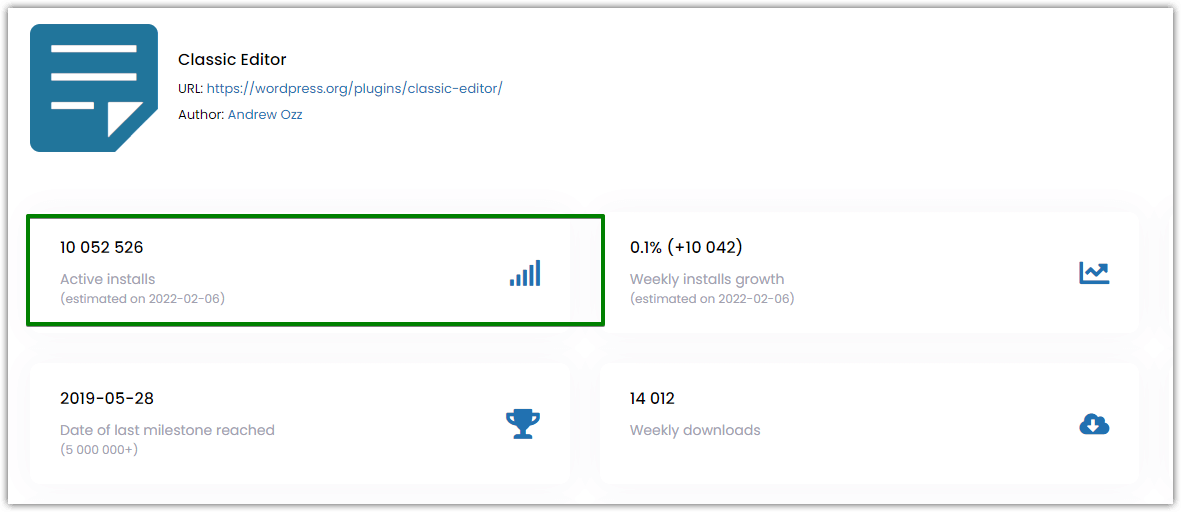
However, as some of the most important WordPress players share neither the exact number of their active installs’ number, nor other essential data, which is crucial to estimate it, it is not that easy to estimate this number. Carry on reading and I will tell you why this happens and how we calculate this estimate number.
Active Installs estimation
The Active Installs app is an easy-to-use and efficient marketing analysis tool for the WordPress repository. It’s free, it’s intuitive and extremely useful for WordPress plugins developers, however it’s not flawless. There are situations where the Active Installs app can not estimate the exact number of a plugin's installs.
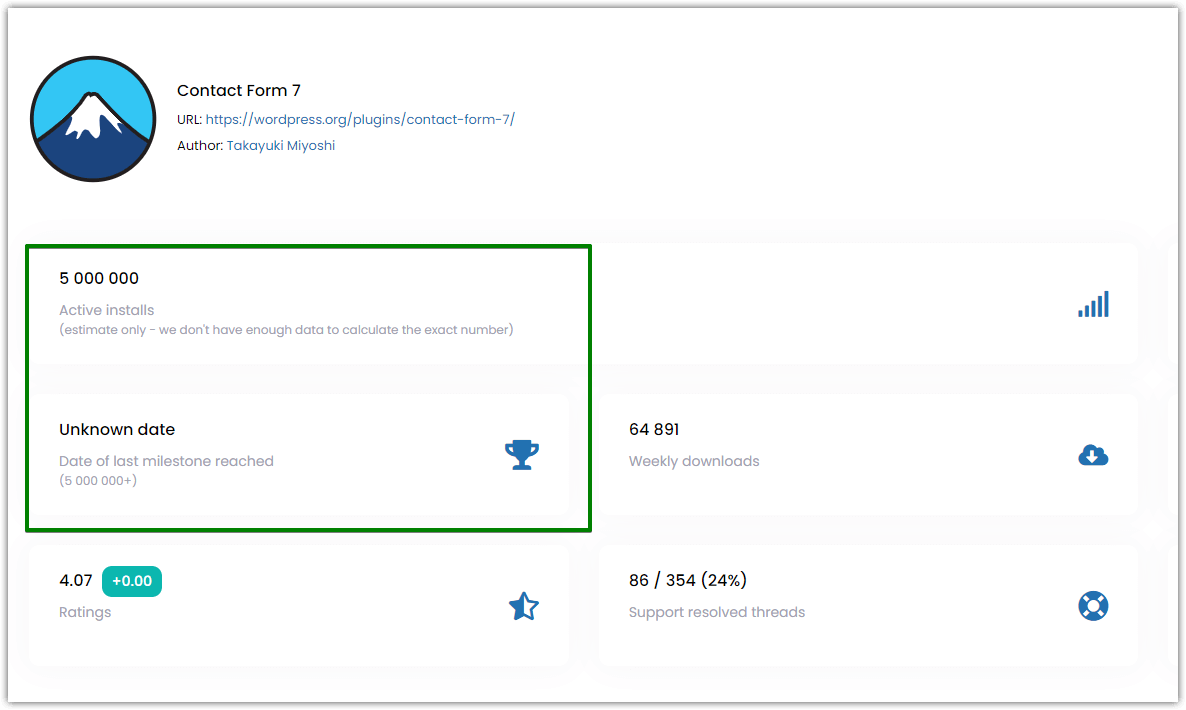
We all know (or if you didn’t - you know it now ;) ) that Contact Form 7 has way more than 5 million active installs. It is currently the most popular WP plugin, and it has the highest number of active installations from all WP plugins. We can assume that, as it comes first in the plugins’ index in the WordPress repository.
Nevertheless, it is pretty much complicated to calculate its active installs number, as in this case, some required for the estimate data is missing.
How do we calculate the actual active installs?
Let’s keep it short: the (approximate) number of active installations that is to be seen while using the Active Installs app, is a composite of two data - the number of active installations reached on the day, when the last milestone has been achieved, and the percentage of growth, which WordPress makes public in each plugin's advanced view:
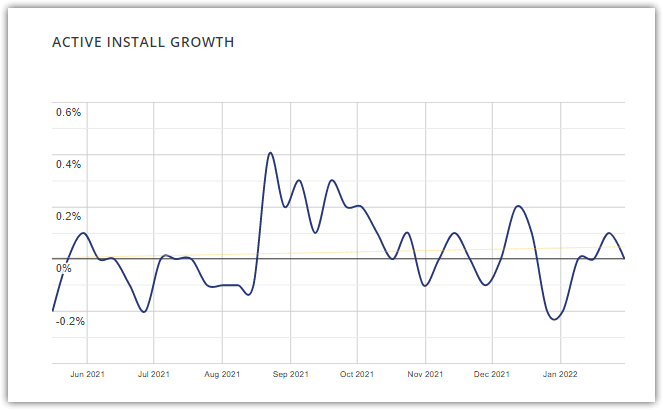
(Obviously, it’s not as simple as that, as we take more variables taken into account while performing the calculation, but let's not go into details.)
So, imagine we know the exact number of a plugin’s active installations that were reached on a particular day. We multiply this number by the estimated percentage growth of a particular week and add it to the original active installations number. If all conditions are met and we dispose of all crucial data needed to perform this calculation, we are able to figure the approximate number of active installations for a plugin.
Let’s have a look at Elementor, for instance:
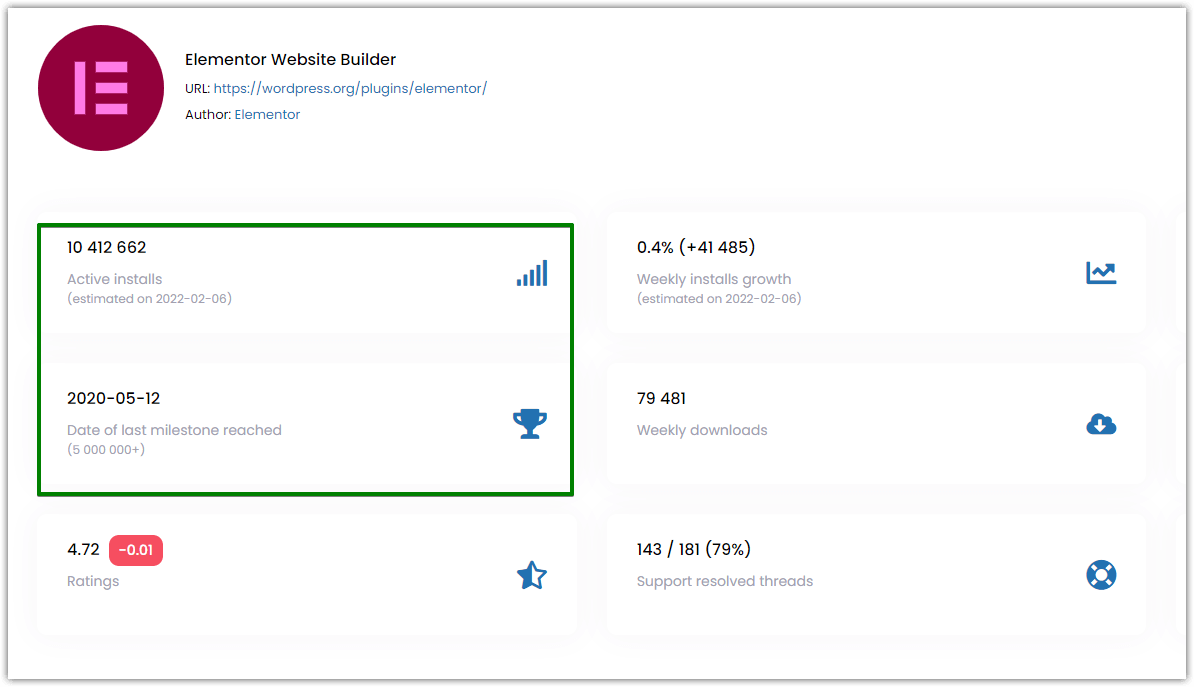
Elementor is a great example of a plugin, which belongs to the most popular WordPress plugins and which has shared all the essential data, which made it possible for us to estimate their active installations number, within a small margin of error. Yay!
Check Elementor's detailed stats estimation calculated by ActiveInstalls.
Now let’s see what happens when we don’t have access to all the information needed to calculate the estimate for active installs of a plugin.
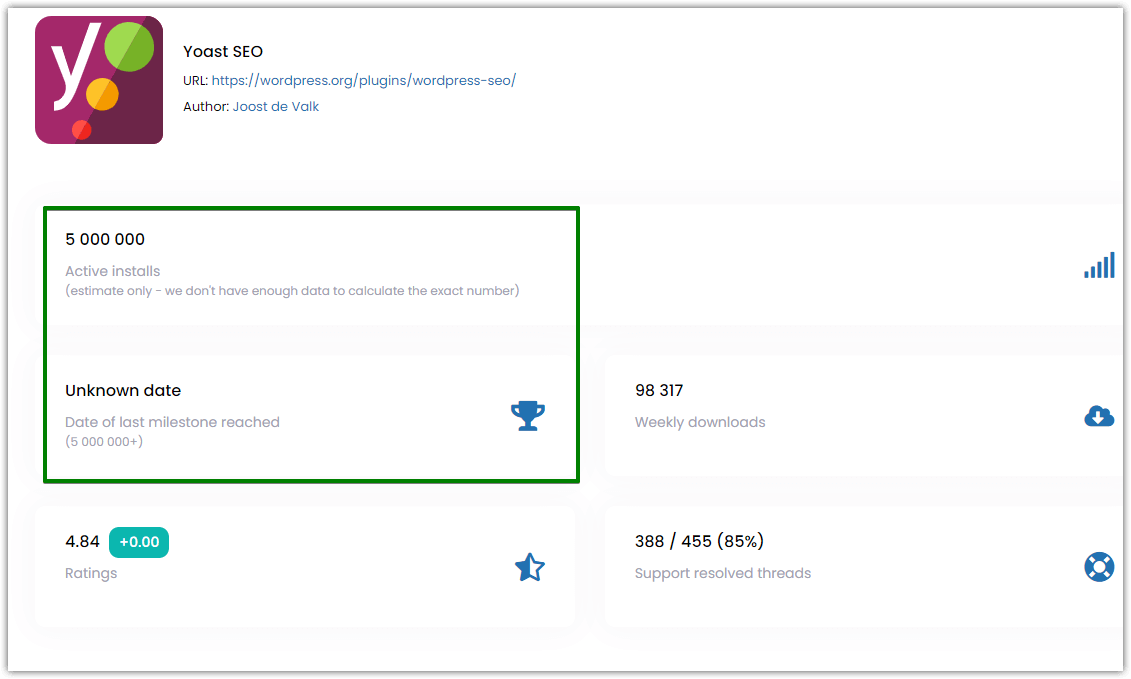
We predict that Yoast is currently the second most popular WordPress plugin. And, just as with, for instance, Contact Form 7, Akismet or Jetpack, we can not estimate the actual number of their active installs.
In all of these cases, this data is the amount taken directly from the WordPress repository.
How come?
The Active Installs app has started to collect data some time ago. This means that we can't perform accurate calculations for plugins, which achieved their last milestone prior to this time. This is caused by the fact, that we miss data in our database. Unfortunately, currently this information is not available either in the WordPress Plugin API, which is the source of our information. As of today, it shows only data posterior to 19th of January 2020 (always more or less two years back prior to the date up to now).
Therefore, we have our hands tied here. We don’t want to cause any confusion to our users while displaying data, which is inaccurate, without giving any explanation. From now on, if there is insufficient data to calculate the estimate for active installs, this information will be displayed:

We hope this clarification has been helpful. We really appreciate our users’ satisfaction and are eager to improve our app. Should you have any suggestions, don’t hesitate to send us an email or comment on this article. We are here to help!





